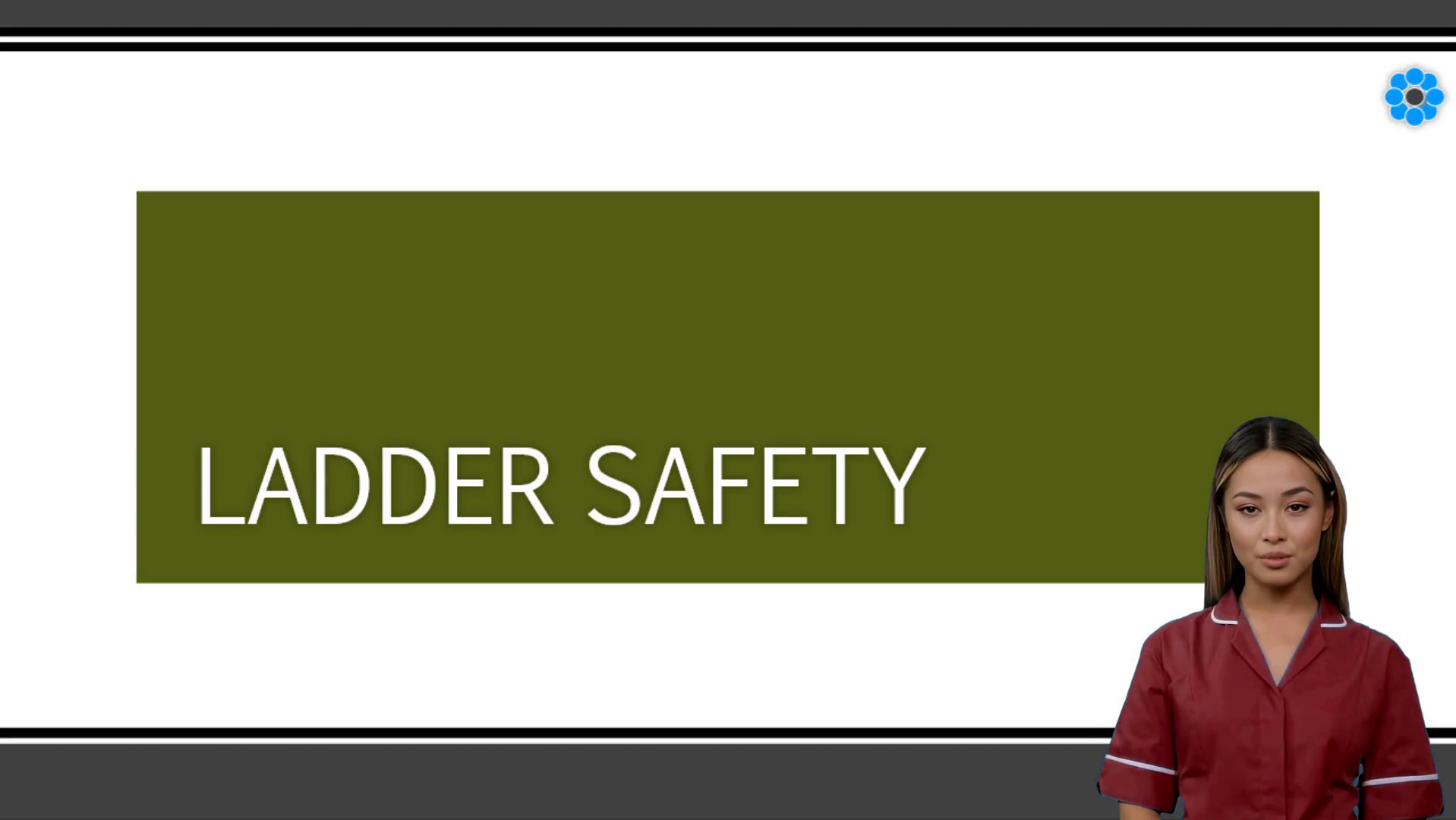Scene 1 (0s)
[Virtual Presenter] Good morning everyone! Today we will be discussing the importance of ladder safety and how we can ensure optimal adherence to the policy at COIM. We will be exploring the different types of ladders and the best practices for using them effectively and safely. Let's get started..
Scene 2 (17s)
[Audio] Ladders are a vital tool in numerous industries as they provide access to varying heights for performing tasks. Portable ladders are particularly useful as they are highly transportable coming in various sizes shapes and designs. To ensure safety and reduce accidents it is essential to employ ladders in the correct manner..
Scene 3 (39s)
[Audio] Ladders are an essential tool though they carry a risk of danger. Identifying and attending to the usual culprits of ladder accidents can help prevent dangerous and potentially fatal collisions. These causes may include overreaching lack of proper securement climbing with one arm standing on the top rung or platform employing worn or broken ladders and leaving tools on ladders. Acknowledging and handling ladder safety is critical to ensure everyone is able to work safely and elude unnecessary serious injuries..
Scene 4 (1m 11s)
[Audio] Ladders can prove to be helpful; however they can also be dangerous. There are three main varieties – stepladders extension ladders and fixed ladders. Stepladders are self-supporting and typically provide a reaching height of a few feet. Extension ladders are designed to lean against walls for greater reach. Fixed ladders are usually attached to walls or other vertical objects and cannot be repositioned. To stay safe it is important to know how to properly use and handle the ladder..
Scene 5 (1m 42s)
[Audio] Selecting a good ladder is of great importance when it comes to ladder safety. The ladder should be designed according to Singapore Standard SS EN 131: 2019 Ladders or any other internationally recognised standard. Furthermore it is essential to check that the ladder is in good condition and suitable for the purpose with no loose missing or damaged parts. In the event the ladder does not meet the standard the supervisor should be notified immediately..
Scene 6 (2m 14s)
Height, Capacity, Purpose. Select a Good Ladder. [image] Duty Rating MAX. LOAD CAPACITY Chart RATED USE Light Duty Household Designed for infrequent 200 lbs household chores, cleaning, painting. etc. Medium Duty Commercial Designed for moderate use by 225 lbs homeowners, painters, handymen. etc. Heavy Duty Industrial Designed for use by contractors 250 lbs in maintenance construction and industrial applications Extra Heavy Duty Designed for frequent use in 300 lbs maintenance, construction and industrial applications. Special Heavy Duty Designed for the most demanding 375 lbs industrial and construction applications. Grade 3 Grade 2 Grade Grade Grade ANSI Type Ill Type II Type I Type Type IAA.
Scene 7 (2m 36s)
[Audio] Inspect the ladder for any visible defects ensuring it is free from oil grease and/or other slipping hazards. Set up and use the ladder on firm level and stable ground away from doorways and windows. Ensure the ladder used is the correct height and that the spreaders are locked in place. Wear proper footwear and maintain three points of contact while using the ladder. To ensure both hands are free for climbing up and down the ladder it may be beneficial to use a tool belt or side pouch to contain tools. Safety should always come first when using a ladder..
Scene 8 (3m 11s)
[Audio] When using ladders maintaining three points of contact with the ladder is essential. Leaning away from the ladder should be avoided and the weight should be kept centred between the side rails. Step platforms and step ladders should be considered for safe access and extended work tasks..
Scene 9 (3m 29s)
[Audio] Safety must be taken into account when accessing heights. Step platforms should be used for a more secure work surface and safe access. Ladders may be used for short-term low-risk tasks but for tasks that will take a longer duration step ladders are the best option for safety..
Scene 10 (3m 47s)
[Audio] When working at heights one must always be cognizant of the potential risks. Employers principals and contractors must undertake a Risk Assessment which is comprised of three steps. Firstly identify the hazards pertaining to the working environment and assess any existing risk control measures. Secondly evaluate the risks relating to each hazard and assign a risk level based on how likely and how severe the outcome is. Lastly select risk control strategies that are effective and practical to bring the risk to an acceptable level..
Scene 11 (4m 26s)
[Audio] Essential to avoid life-threatening injuries is to always practice ladder safety. Make sure to wear proper footwear when using a ladder and be educated on the importance of three-point contact. Further it is important to secure the ladder where possible; such as securing its base to avoid slipping or tying the ladder to a suitable fixture. Never take risks when it comes to ladder safety..
Scene 12 (4m 50s)
12. COIM Internal Use Only.
